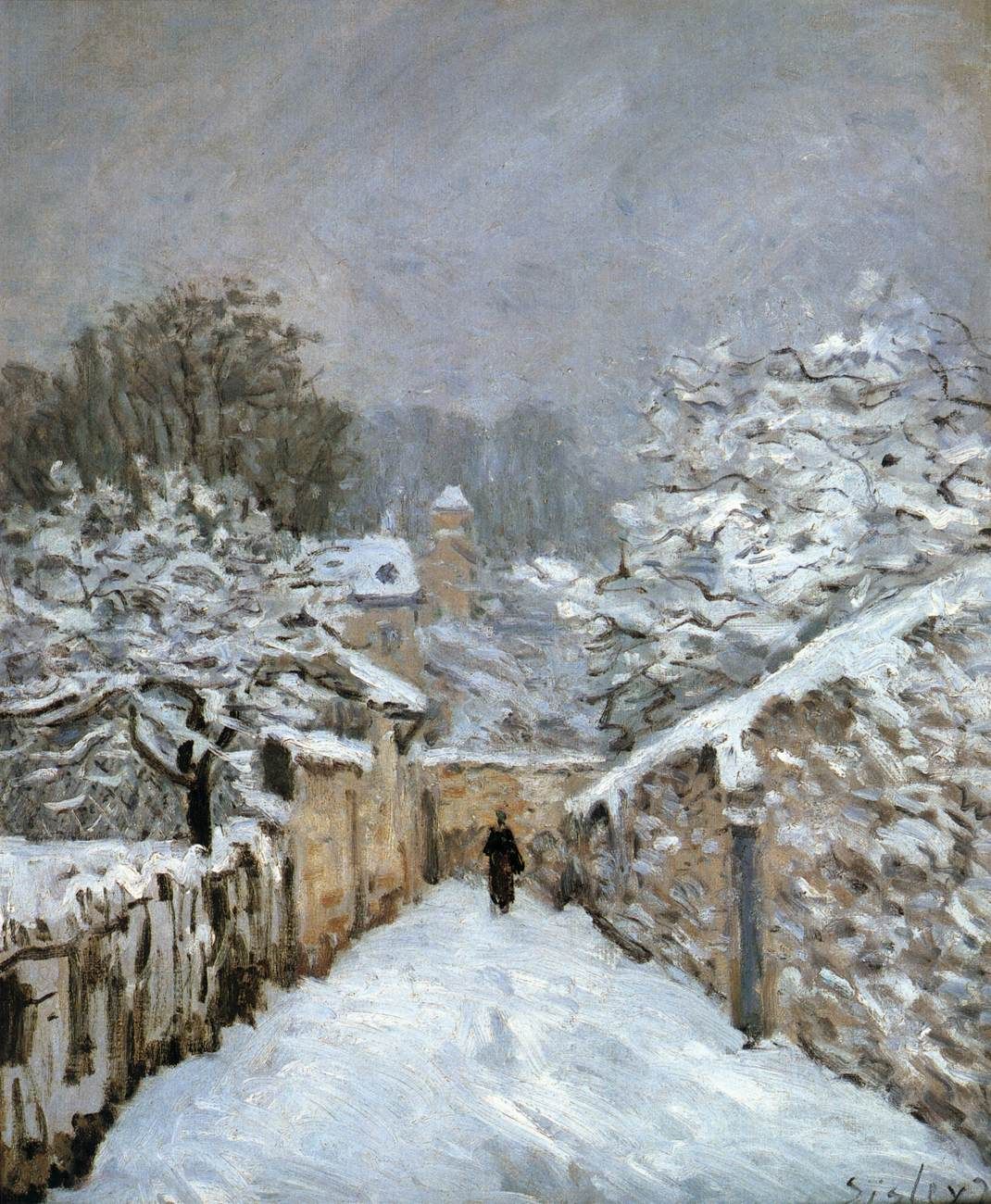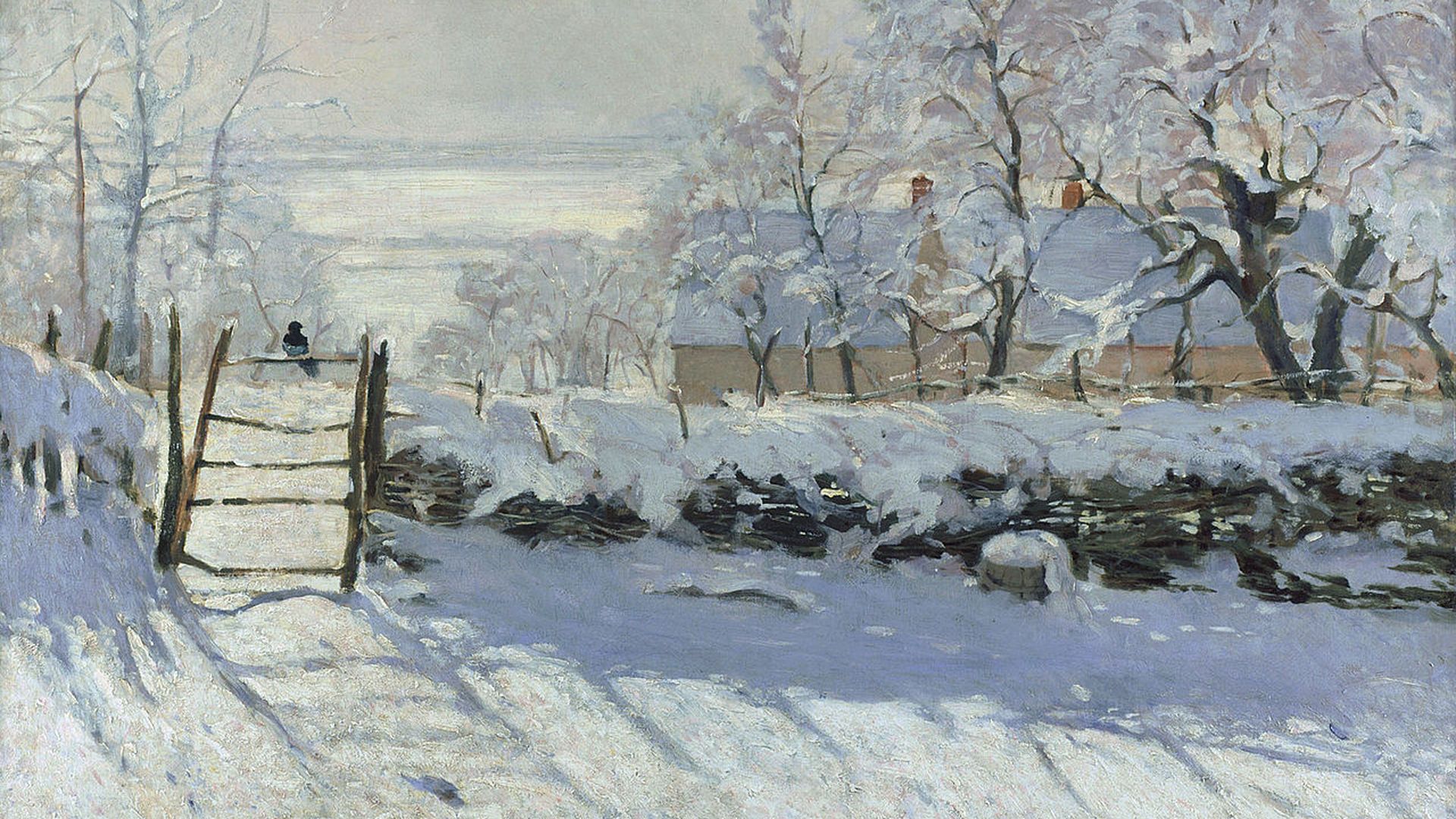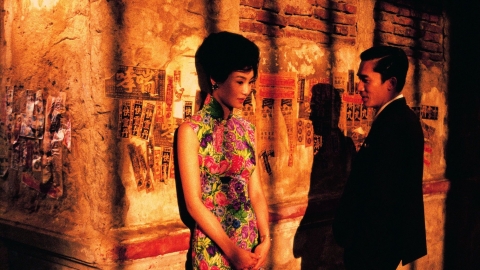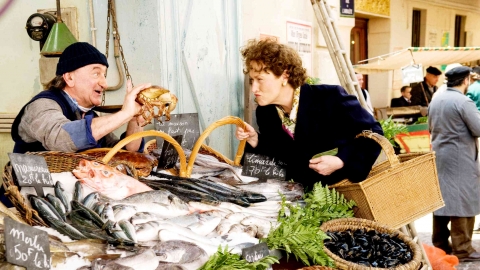Winter comes to us, bringing with it festive celebrations, the aroma of chocolate and pastries, the chilly air, and snow in cold countries. And what do artists see in winter, when the weather is the harshest and bleakest of the year? Perhaps it is the love of nature, the harmony of people and animals, sympathy for the hard-working people, the fun and parties on the ice, or a wish for a peaceful and warm life.
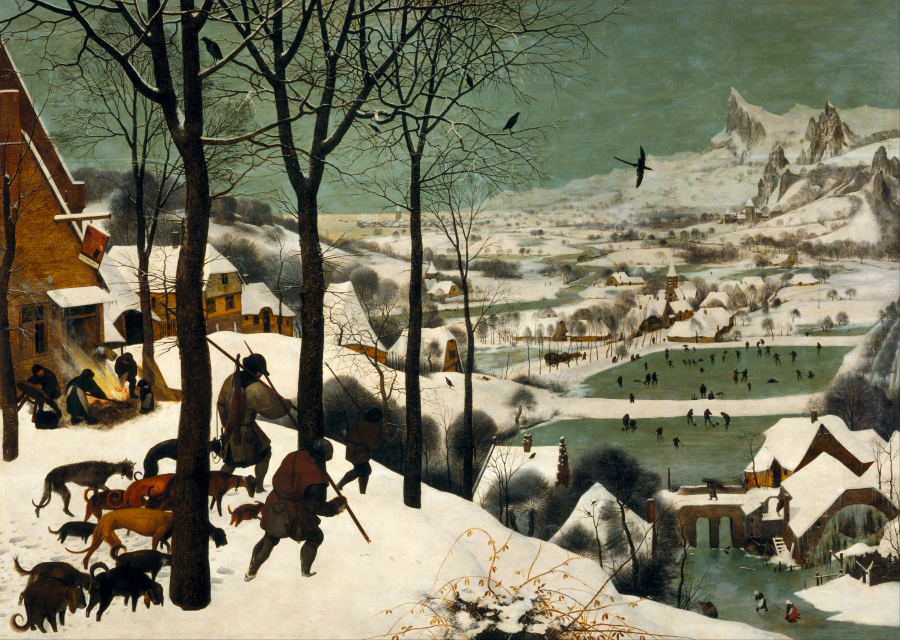
Hunters in the Snow (Pieter Bruegel the Elder, 1565)
Winter scenes are generally more difficult to paint than summer scenes and were relatively rare subjects in Western art until the early Renaissance. One of six paintings representing the seasons painted in the late 16th century, the workHunters in the SnowPieter Bruegel the Elder's paintings marked a major shift from symbolic representations of the seasons - a tradition in Europe - to realistic depictions. Only five of the series survive, the summer scene being lost forever.
Hunters in the Snowdepicts idyllic rural life on a winter day, three hunters and their dogs are returning home from a trip in the woods. The trip seems to have been unsuccessful, with only one carrying what looks like a small fox. Before them are the tiny footprints of an escaped hare. A valley with a winding river and jagged mountain peaks stretches out before them. There is a watermill, the wheels of which have been frozen solid. Villagers are skating and playing hockey on the pond. This is not a typical Dutch scene, and may not resemble the real Holland of the late sixteenth century. The 1560s were the time of the religious revolution in the Netherlands, and Bruegel may have wanted to portray an ideal of rural life in his dreams rather than the scenes that unfolded before him.

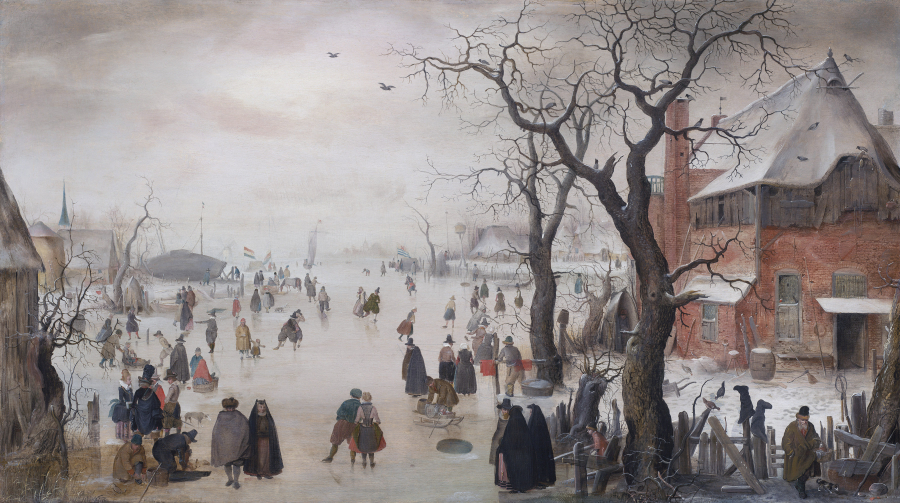
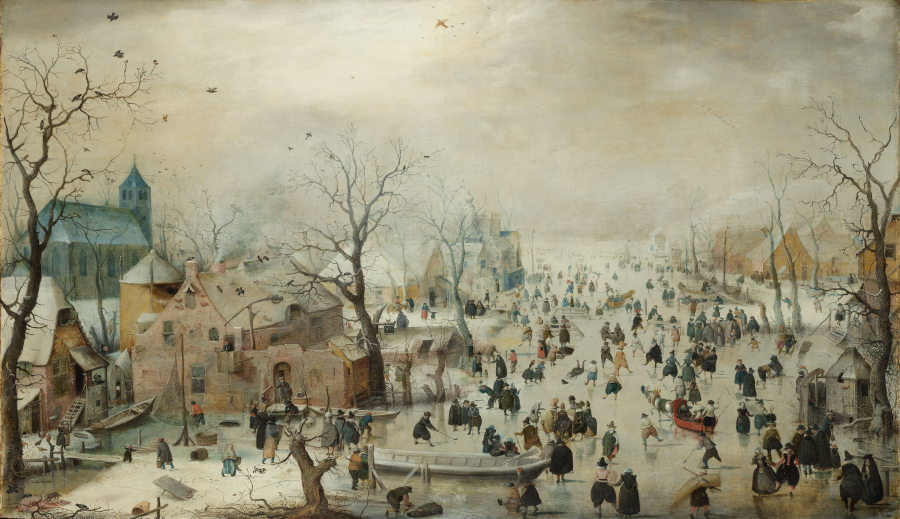
Winter landscape paintings by Hendrick Avercamp
Hendrick Avercamp, another of the 17th-century Dutch landscape painters, specialized in painting Holland in winter. Although not as famous as Rembrandt or Vermeer, Avercamp's paintings were popular and highly valued during his lifetime. Although deaf and mute, he had an exceptionally keen eye for observation. His works are colorful and vibrant, with meticulously crafted images of people in harmony with natural landscapes. He often included sports and leisure activities in the Netherlands in the early 17th century, with many paintings depicting ice skating on frozen lakes, partly because this was his favorite sport since childhood, and partly because the last decades of the 16th century (when Avercamp was a child) were one of the coldest periods in Europe, also known as the Little Ice Age.
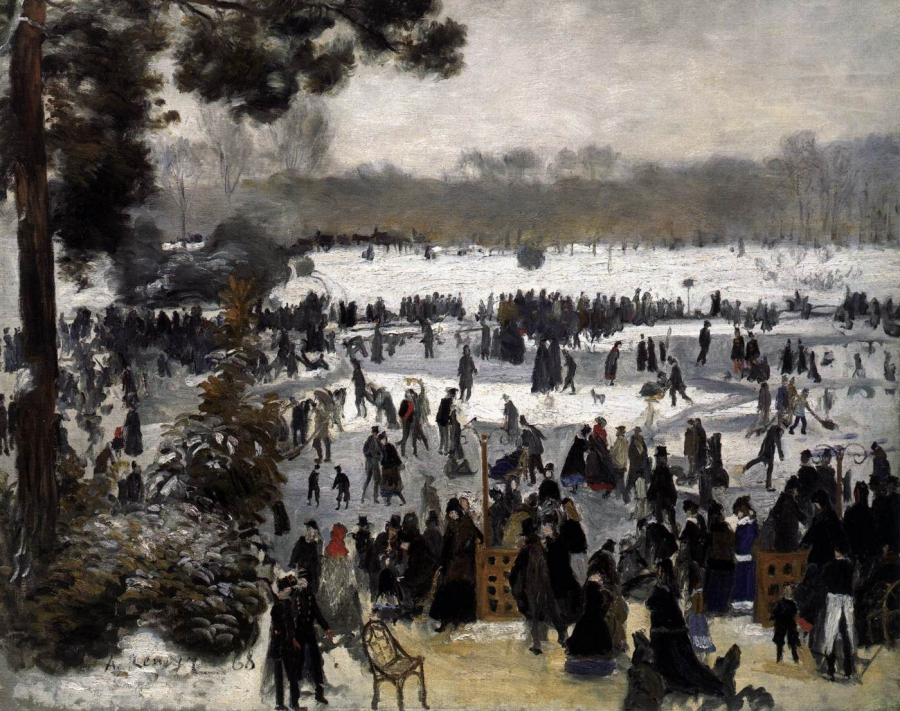
Skaters in the Bois de Boulogne Park (Pierre-Auguste Renoir, 1868)
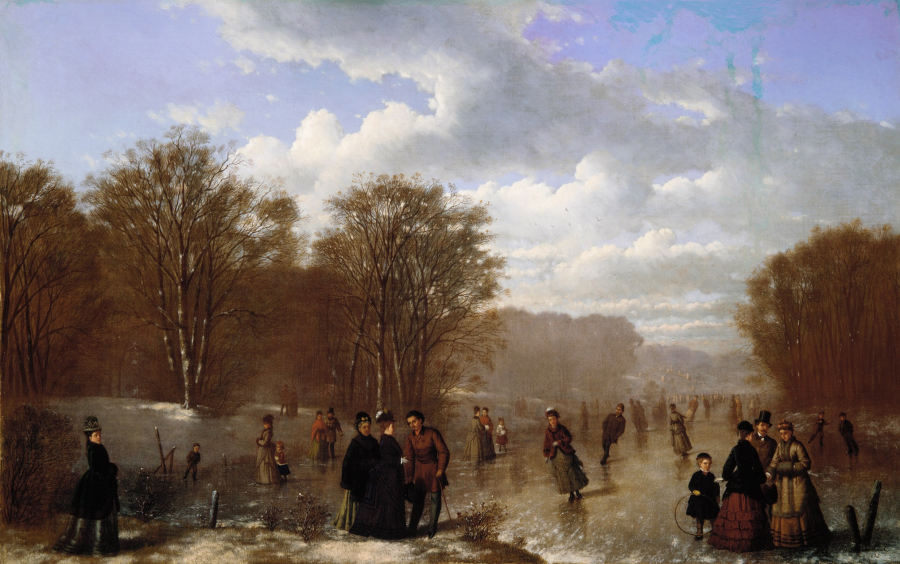
Ice skating at the Wissahickon (Johan Mengels Culverhouse, 1875)
Hendrick Avercamp was not the only artist fascinated by ice skating. Artists such as Pierre-Auguste Renoir and Johan Mengels Culverhouse discovered the elegance of this winter sport and immortalized its dramatic moments in their paintings. In the paintingIce skating on the Amstel riverIn Adam van Breen's painting, the whole town seems to be out having fun on the river. The painting conveys the essence of ice skating in 17th-century Holland: not the privilege of a few or a certain class, but a popular and practical winter activity for everyone, from all walks of life. And theIce skating near the wallAnthonie Beerstaaten's painting appears to depict a hockey game. The sepia tones of the painting suggest a short mid-winter day, cold, dark and a little gloomy, but not lacking in the joy of ice games, for example, in the distance, a horse can be seen pulling a boat carrying people across the river.
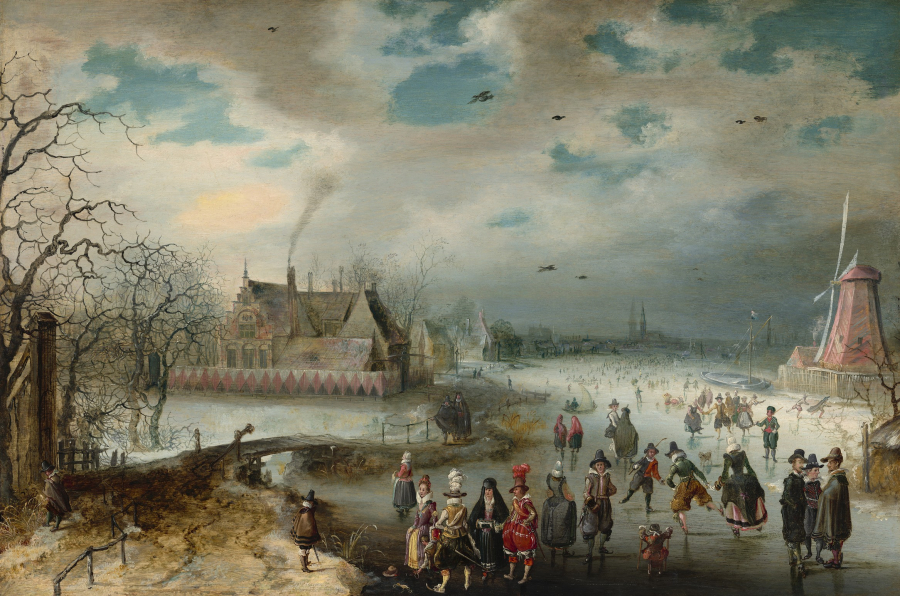
Ice skating on the Amstel river (Adam van Breen, 1611)
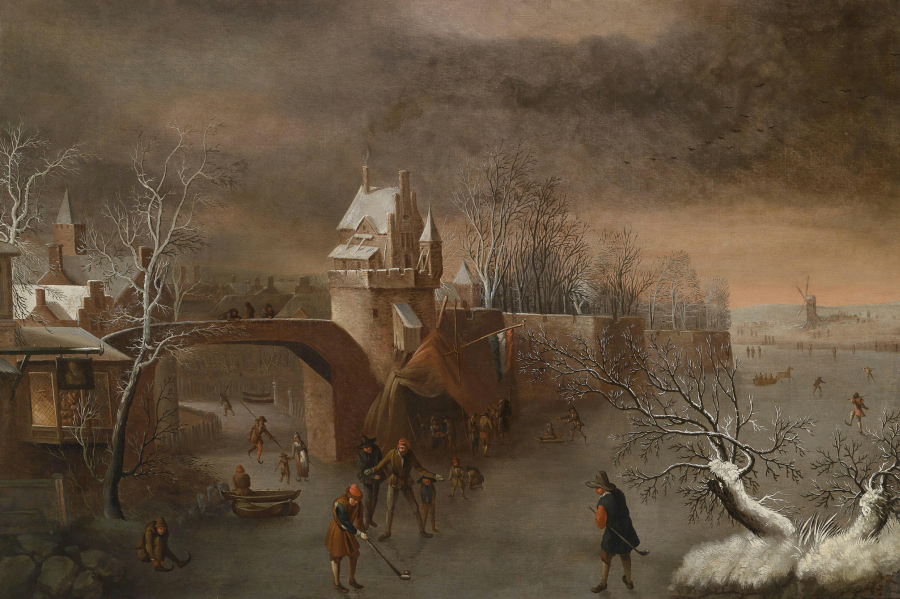
Skating near the city wall (Anthonie Beerstaaten)

Women's Figure Skating Competition on Stadsgracht, Leeuwarden (Nicolaas Baur, 1809)

Ice Rink in Central Park, Winter (Charles Parsons, 1862)

Ice skating at the Victoria Ice Rink, Montreal (William Notman, 1870)
PictureWomen's Figure Skating Competition at Stadsgracht, LeeuwardenNicolaas Baur's painting depicts a skating competition held in Leeuwarden, Netherlands, in the early 19th century, with a frenzied crowd of spectators. Speed skating is one of three forms of skating included in the Winter Olympics, and is a favorite sport of the Dutch. In New York, USA, skaters (and sometimes dogs) often gather in Central Park, as in this painting by Charles Parsons. The paintingIce skating festivalA re-enactment of a glamorous event at an indoor ice rink, held in honor of Queen Victoria's youngest son, Prince Arthur, who was living in Montreal at the time. Notably, this painting is a composite of more than 150 photographs, taken by pioneering Canadian photographer William Notman (1826-1891).
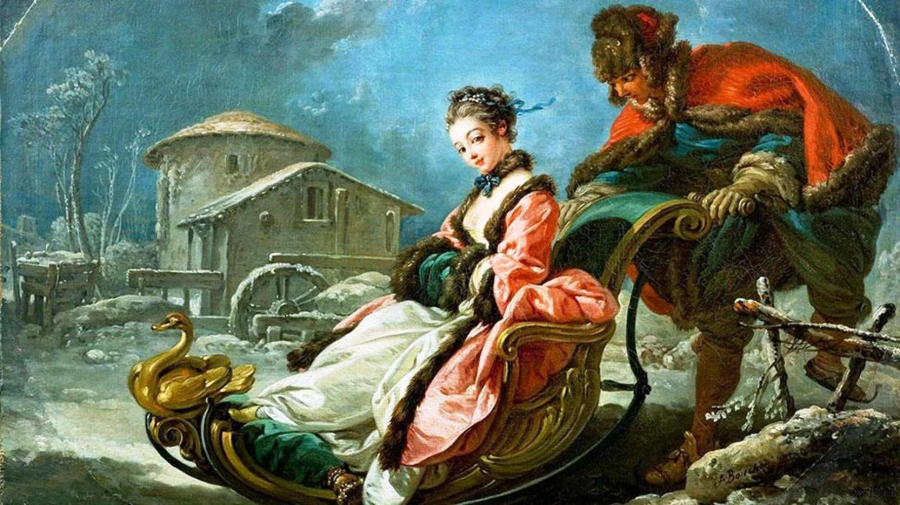
The Four Seasons: Winter (François Boucher, 1755)
Another historical painting isWinterin the seriesFour seasonsby François Boucher, an icon of the 18th-century Rococo style. Instead of depicting nature or peasants, François Boucher depicts a courting couple on a golden sledge. The painting was made for Madame Pompadour, the mistress of King Louis XV.
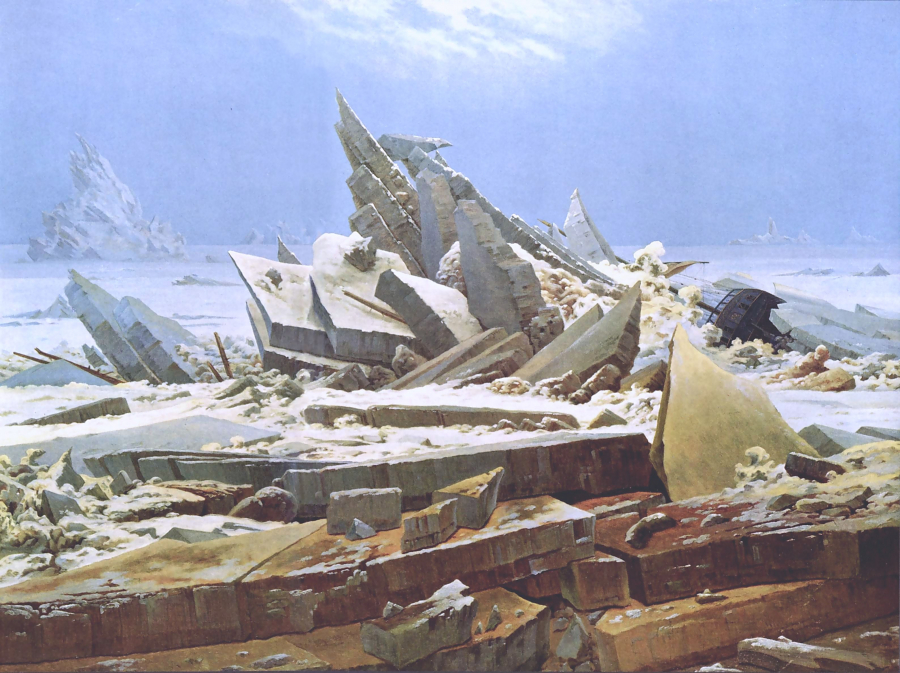
The Ice Sea (Caspar David Friedrich, 1824)
PictureSea iceCaspar David Friedrich's painting depicts a shipwreck during an Arctic expedition, a subject that was considered unusual in the early 19th century. The iceberg completely engulfs the ship, looking like a tombstone. The beauty of nature amidst the ice completely overshadows human life. JMW Turner's blizzard scene is similarly impressive. In it, the Carthaginian general and his entourage are attacked by local guerrillas and are overwhelmed by a snowstorm in the Val d'Aosta region. The blizzard rolls in like a giant wave, representing Turner's vision of the majestic power of nature.

Blizzard: Hannibal leads his army across the Alps (JMW Turner, 1812)
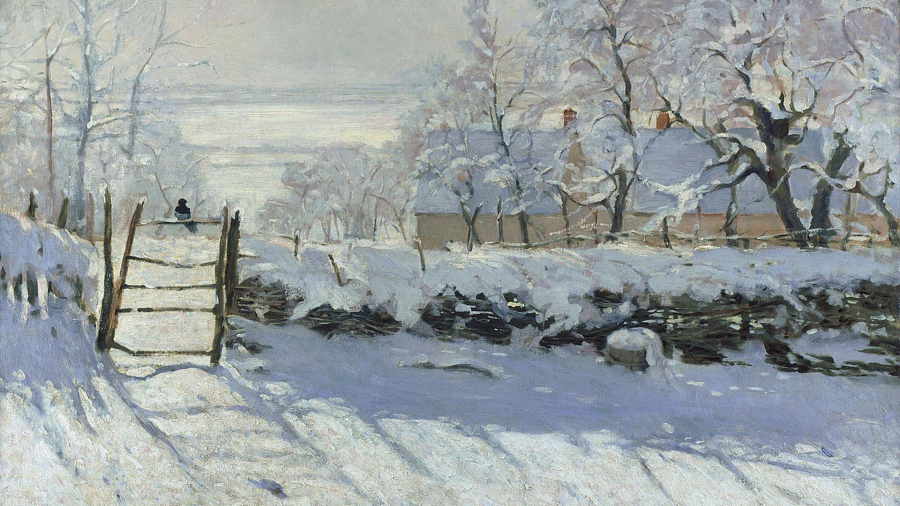
The Magpie (Claude Monet, 1868-1869)
Impressionist painter Claude Monet was a master of winter scenes. He painted over 100 of them. Legend has it that when Edouard Manet saw Monet's masterpiece of winter, he gave up on painting anything similar.Magpieis Monet’s largest winter painting, depicting a lone magpie on a fence at Etretat. But the most striking thing about this work are the shadows cast on the snow, which are not just black, but a striking shade of blue.
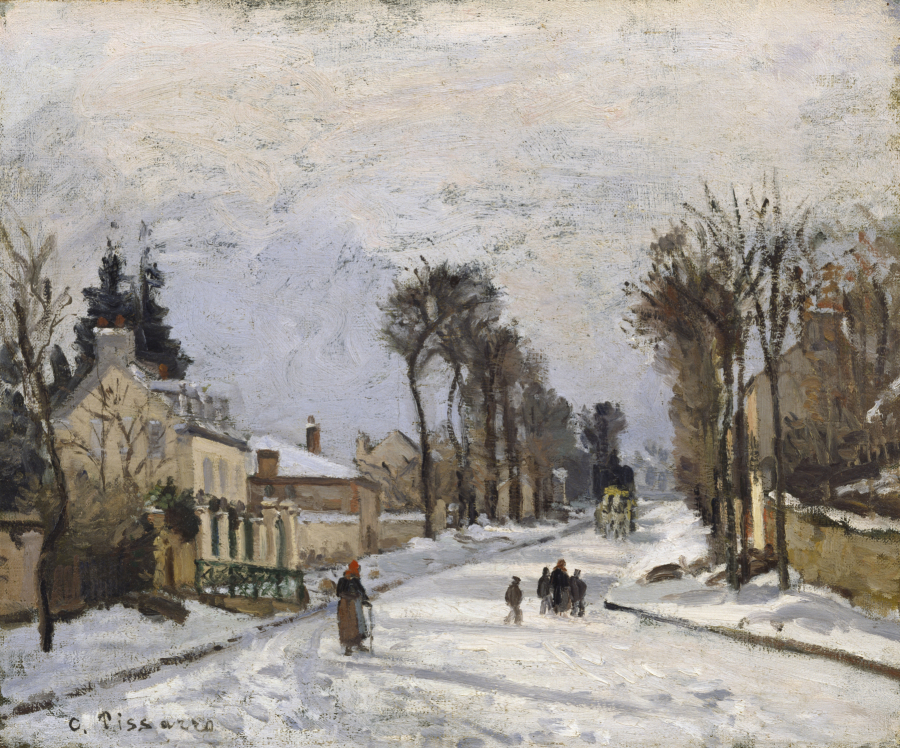
The Road from Versailles to Louveciennes (Camille Pissarro, 1869)

The Louvre in Snow (Camille Pissarro, 1902)
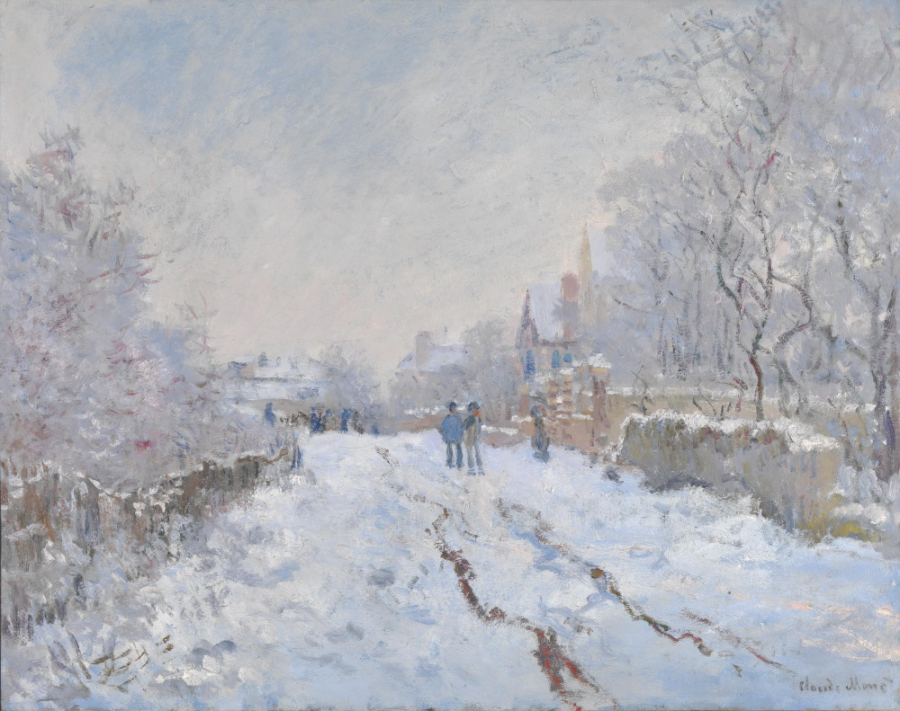
Snowfall at Argenteuil (Claude Monet, 1875)
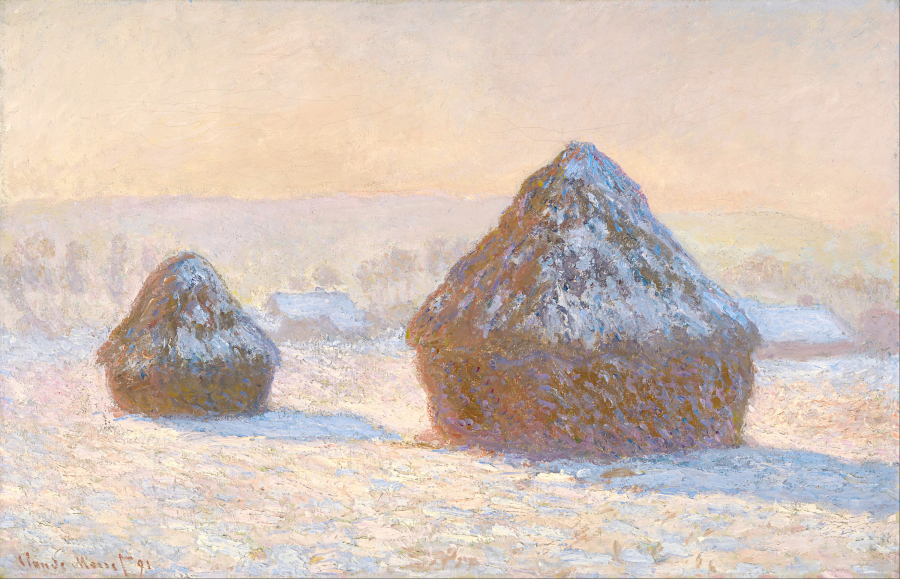
Heaps of wheat, snow effect, morning (Claude Monet, 1890-1891)
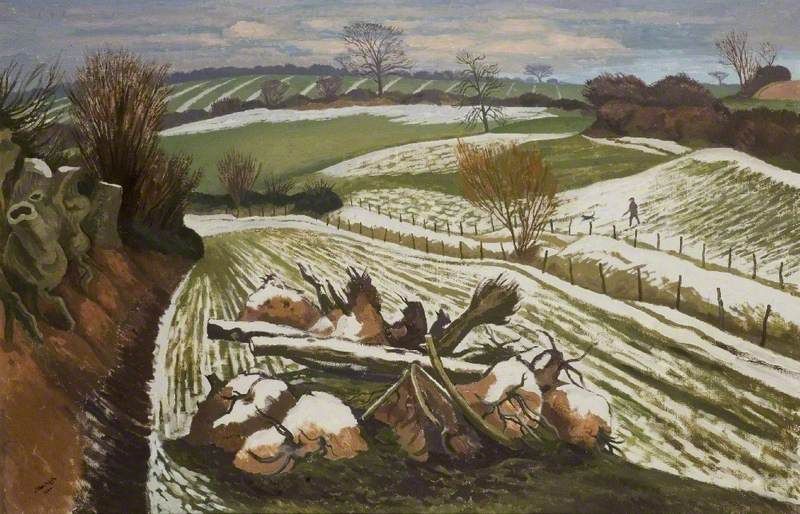
Melting Snow at Wormingford (John Nortcote Nash, 1962)
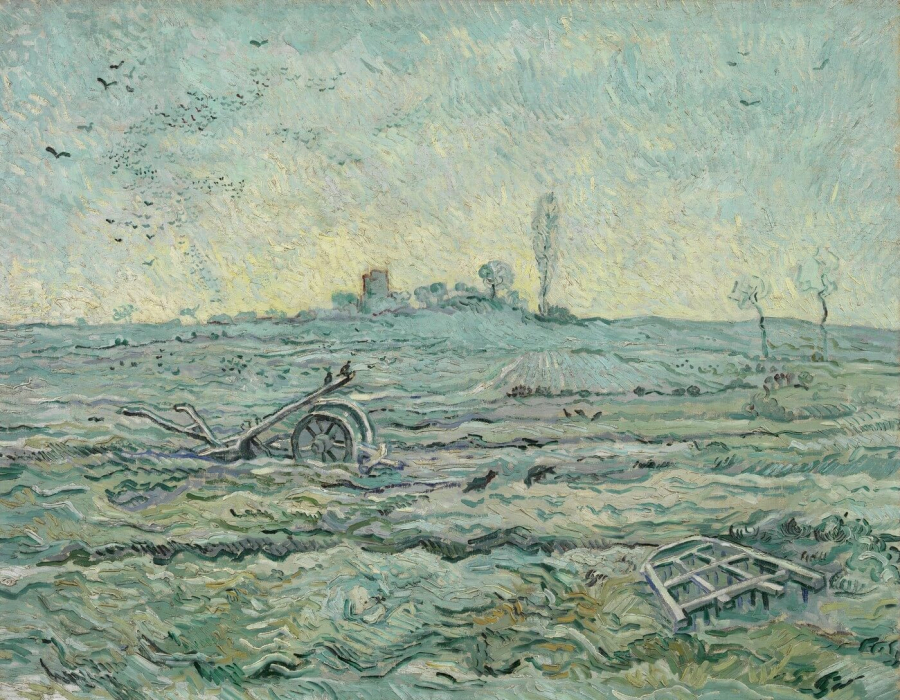
Snow-covered field with a harrow (Vincent van Gogh, 1890)
The pure white of snow has inspired many artists, such as Camille Pissarro, Vincent van Gogh, Kazimir Malevich or John Northcote Nash, whether it is a gentle snow-covered Paris, a rustic countryside field or a sharp and fierce abstraction after a blizzard. Perhaps because white snow is not an easy subject to paint: although it is white, you cannot leave the paper blank without coloring it, and if you do color it, what color should you paint it with, because the white of snow is never simply white, but a mixture of pink, blue, yellow, purple... even black, creating a white scene but still has impressive shades of light and dark, near and far.
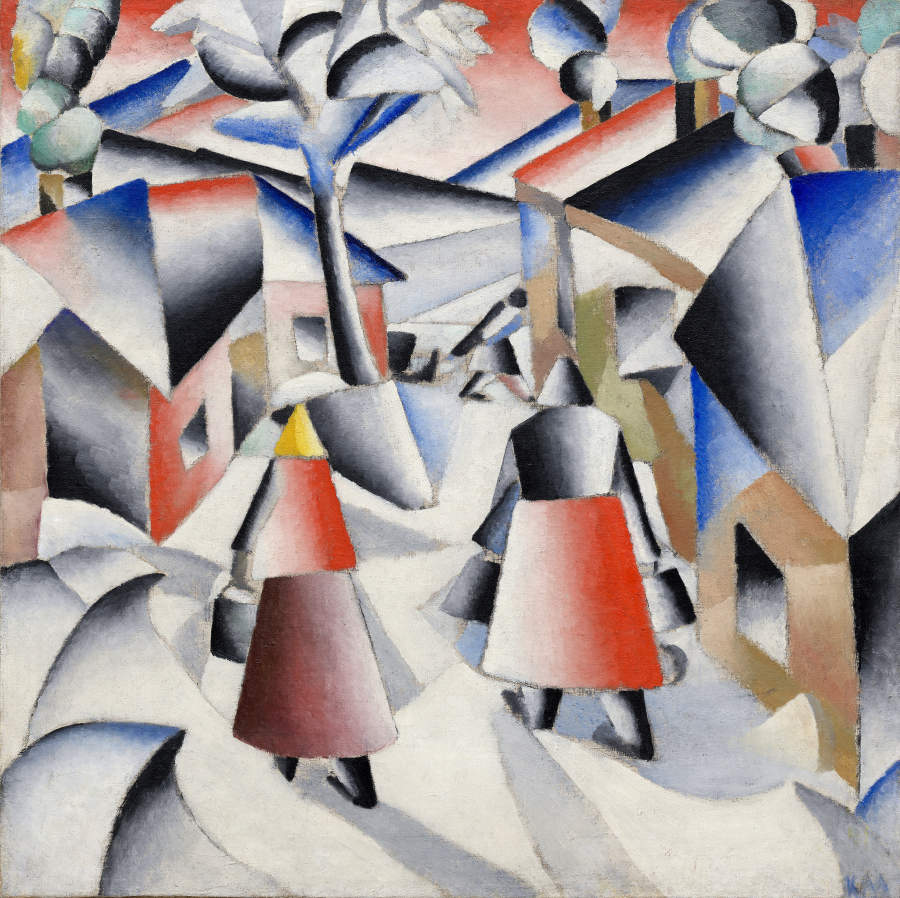
Morning in the Village After the Blizzard (Kazimir Malevich, 1912)

Winter Landscape (Wassili Kandinsky, 1911)
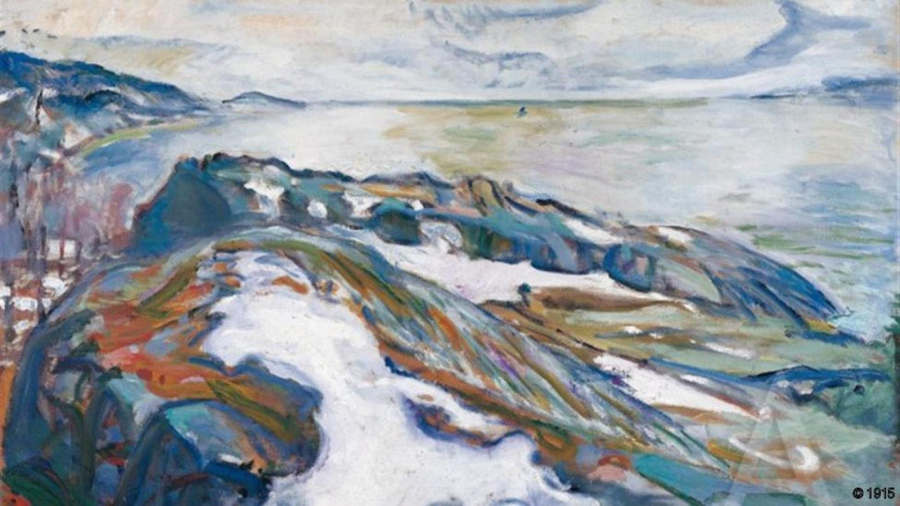
Winter Landscape (Edward Munch, 1915)

Fresh Snow on the Boulevard (Edvard Munch, 1906)
Early in his career, Wassili Kandinsky developed a style that combined rather mysterious tones.Winter landscapeis the last painting in this style before he returned to absolute abstraction. In the painting, the yellow sky blends with green and white. The path to the small house in the center glows pink and the hillsides are a riot of random splashes of color. AndWinter landscapeEdward Munch's The Norwegian Winter depicts the depth of winter in Norway. The unexpected bands of color on the snow-capped mountains are streams of green, blue, and pink, making this peaceful image blend with emotion and excitement, forming Munch's masterpiece. And inNew snow fell on the Avenue, the white road creates a complete contrast with the brown, black and red streaks of trees, sky and pedestrians, creating a picture that radiates the cold of winter.
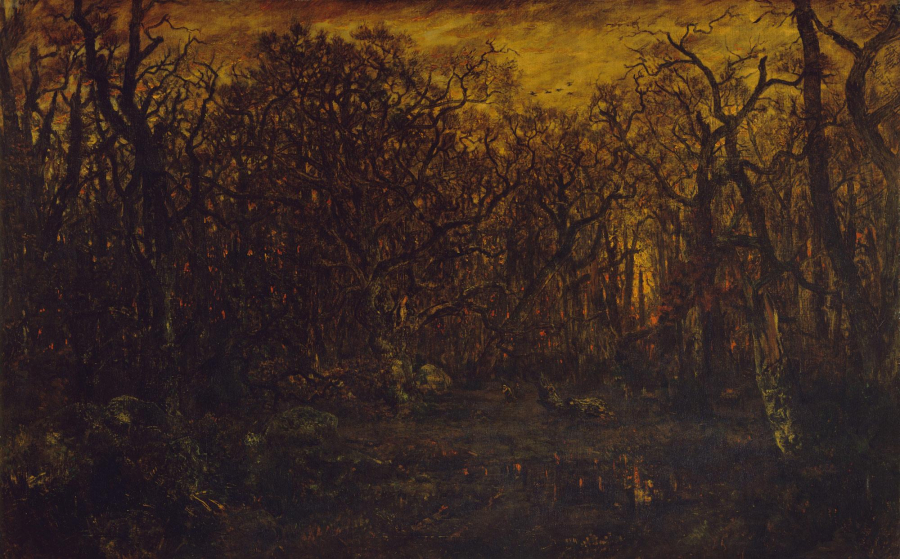
Winter Forest at Sunset (Théodore Rousseau, 1946-1947)
Theodore Rousseau was repeatedly rejected from the Paris Salon (the official art exhibition of the Academy of Fine Arts from 1748 to 1890), but he later became one of the leading figures of the Barbizon – a group of mid-19th-century painters who often painted the forest of Fontainebleau.Winter forest at sunsetis a large painting, unfinished at Rousseau's death. It depicts not the detailed appearance of bare oaks in a forest, but their actual appearance and the heightened emotions evoked by nature.

Mountain View (Giovanni Segantin, 1898)
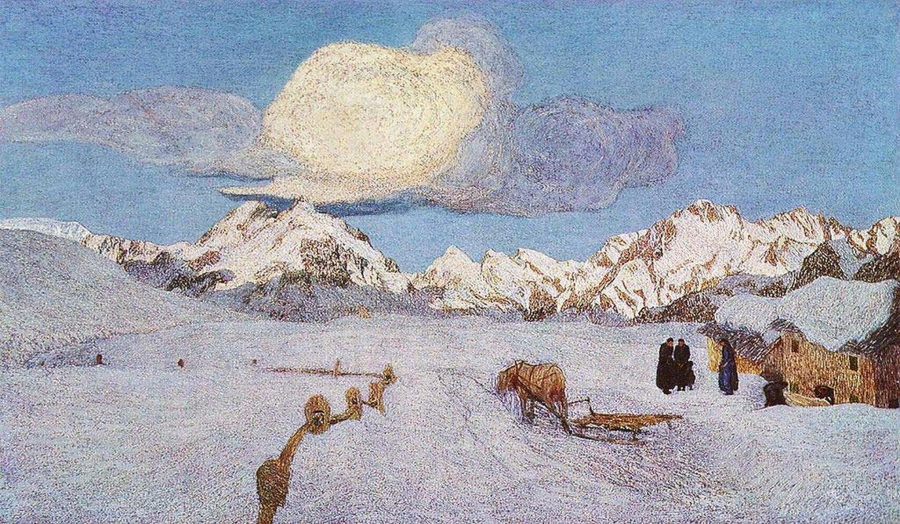
Death (Giovanni Segantin, 1898-1899)
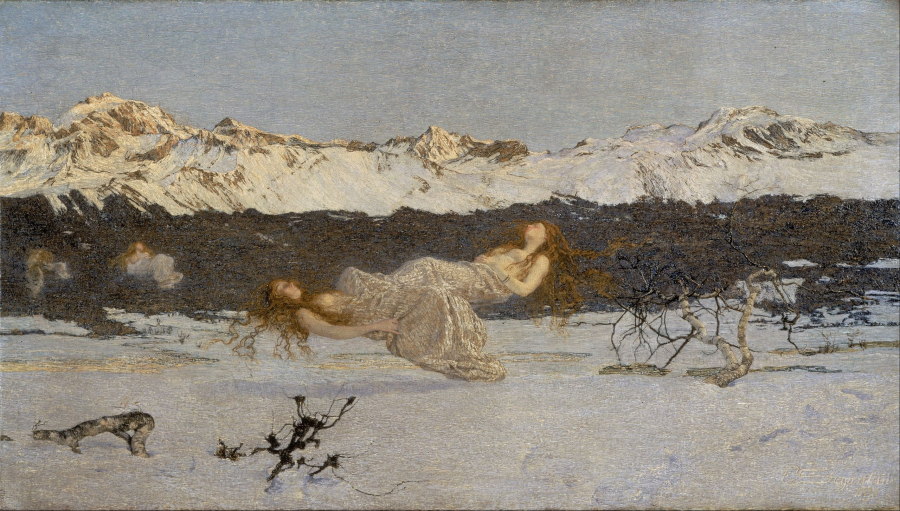
The Punishment of Lust (Giovanni Segantin, 1891)
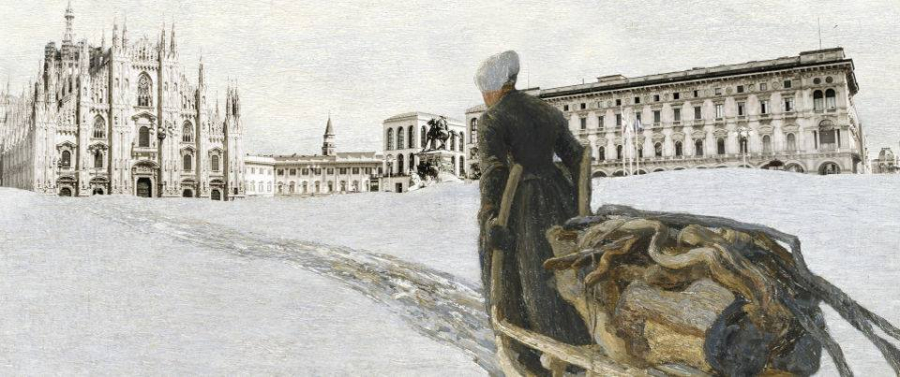
From the Forest to Home (Giovanni Segantin, 1890)
Italian painter Giovanni Segantini was also passionate about natural landscapes, especially the high mountains, where it was winter all year round. Orphaned at a young age, poor, uneducated, illiterate, exiled and stateless, Segantini had outstanding artistic talent and was warmly welcomed in Europe in the late 19th century. Unable to marry due to lack of legal papers, Segantini, his lover and children often had to change residence due to being ostracized by the community; they left Italy and wandered to the Swiss mountains. This place brought a rich and intense inspiration to Segantini, he built a mobile studio high up in the mountains to paint giant oil paintings, and spent the night there. However, tragic fate did not leave him; the cold, stressful work pace and harsh altitude affected his health, he fell ill and died at the age of 41.
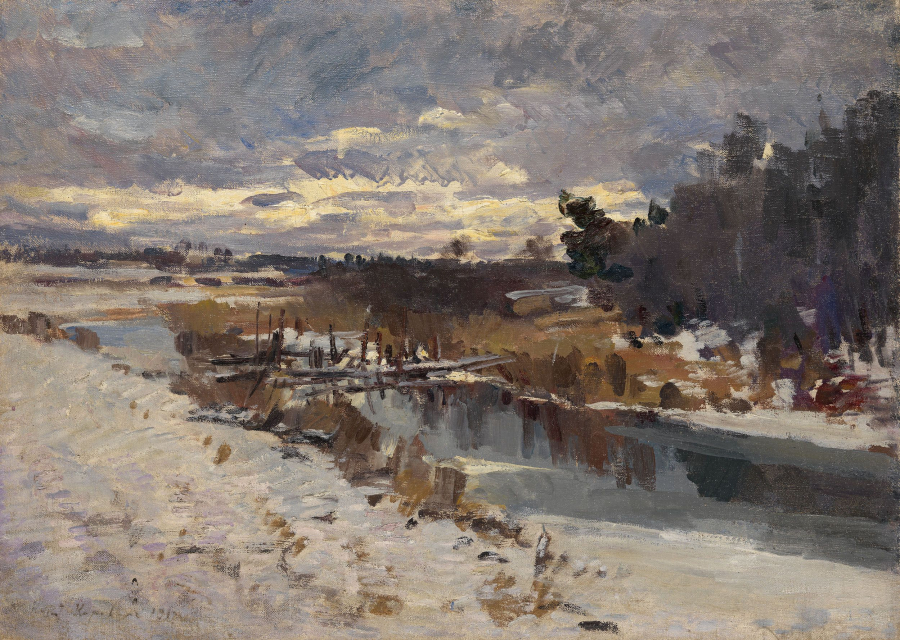

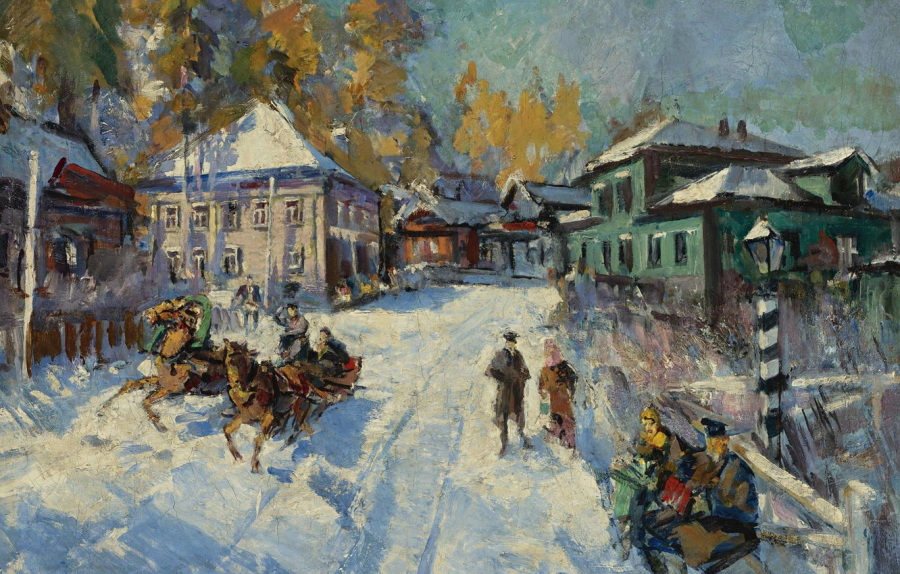
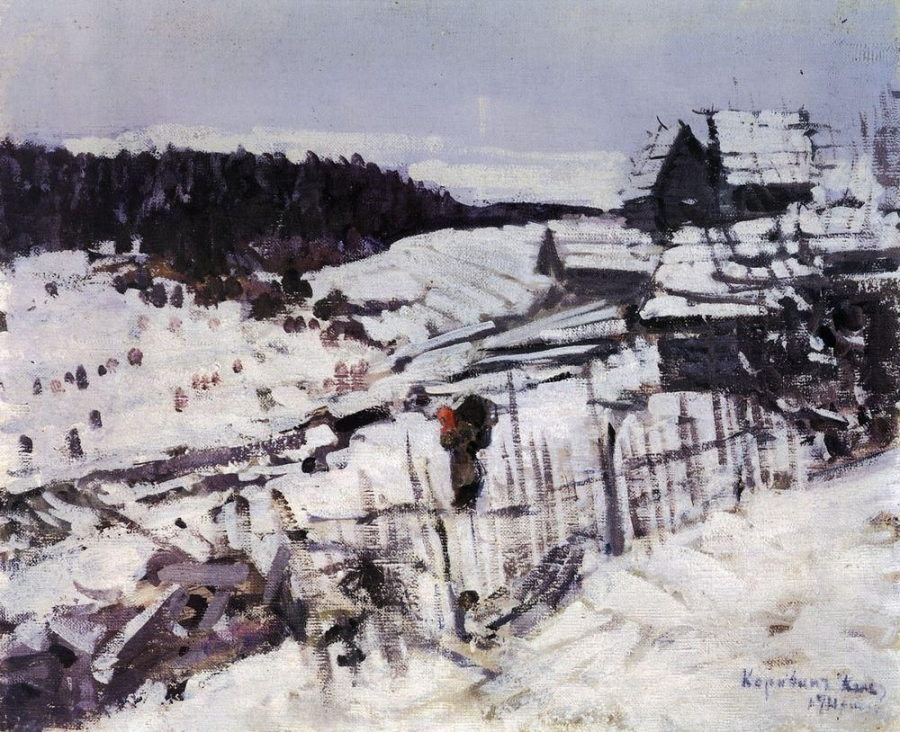
Russian winter landscapes by Konstantin Korovin
When it comes to winter paintings, we cannot ignore the paintings of Russian winter scenes. The white winter in the land of the White Birch, though bitterly cold, is always beautiful enough to fascinate visitors and is also a source of inspiration for many artists, including the famous Impressionist painter Konstantin Korovin. Unlike his compatriot Kazimir Malevich, who used vivid colors in his winter landscape paintings to attract all attention, Korovin's paintings have the subtle beauty of muted colors, expressing the harsh Russian life in the cold but also very gentle and soft. But the huge number of paintings of Russian winter by Korovin did not necessarily come from his love for his homeland. In 1923, when he went to Paris to open a solo exhibition, Korovin had all his paintings stolen and fell into a state of penniless poverty. To make a living in the following years, he had to produce many paintings with the theme of Russian winter, which was very popular at that time.
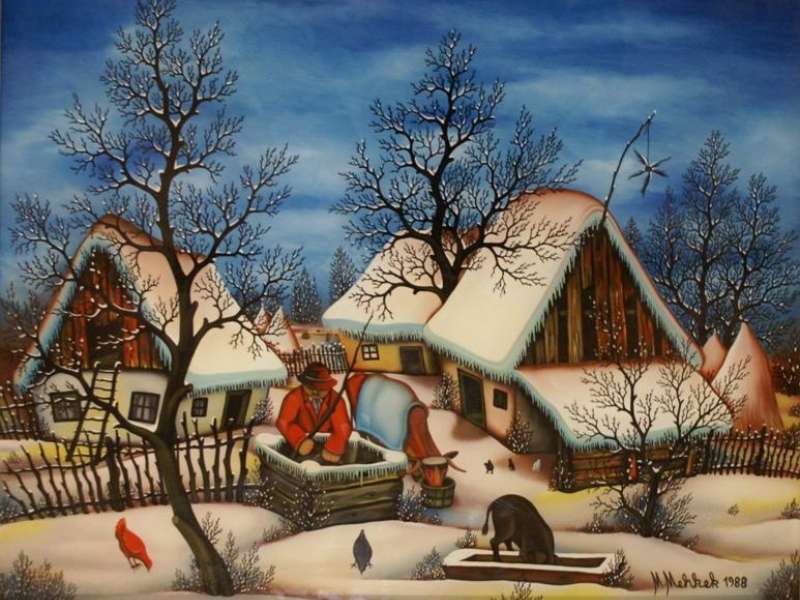
Winter (Martin Mehkek, 1988)
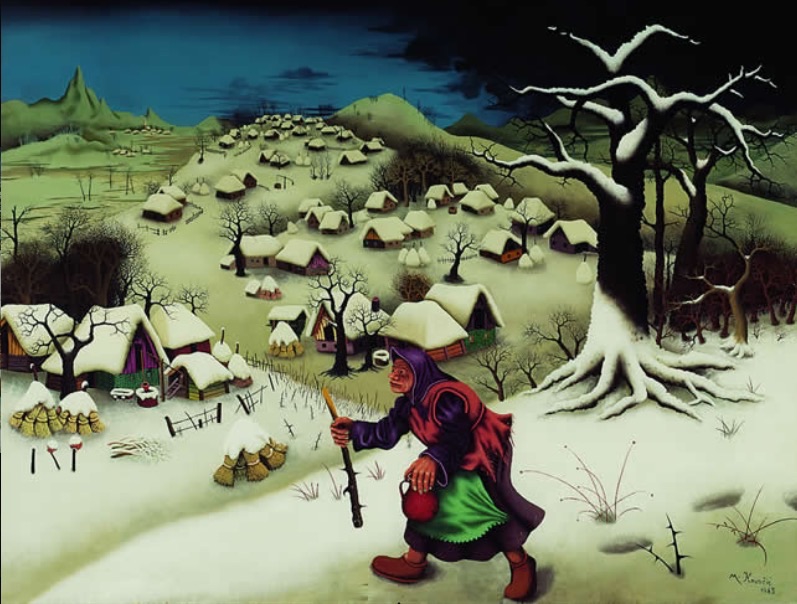
Winter Landscape (Mijo Kovačić, 1965)

Winter in Hlebine (Ivan Generalić, 1962)
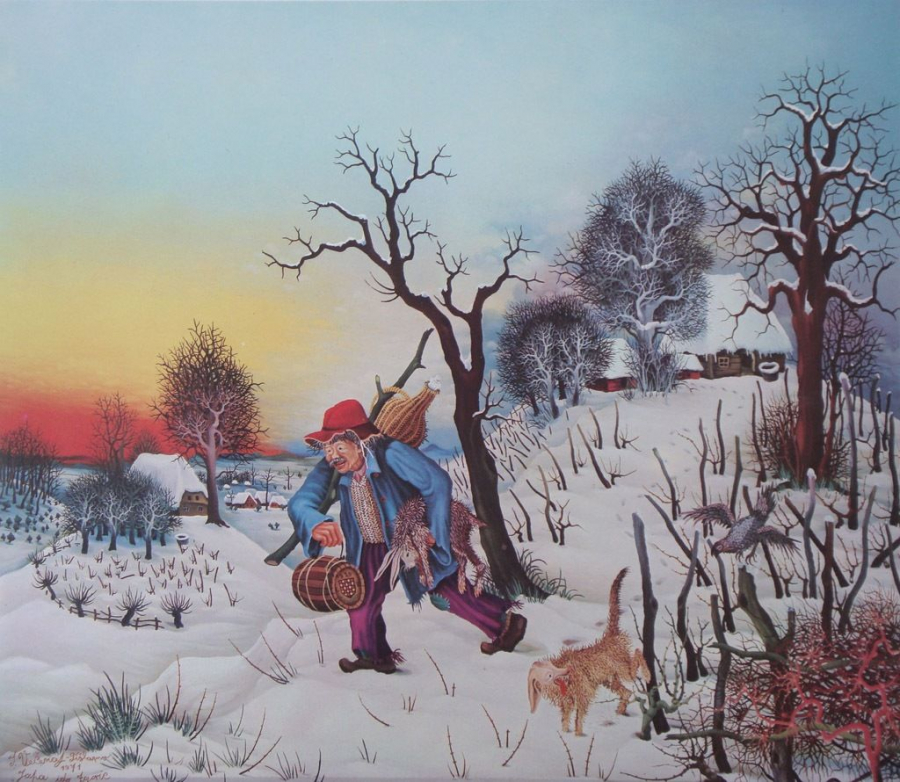
The Carpenter Father Came From the Vineyard (Ivan Večenaj, 1971)
Croatian winter pictures have a romantic fairytale beauty. On the small roads leading to the village, a thick layer of pure, smooth snow flows down, covering the wooden roofs like milk cream. The bare, leafless tree trunks also contribute to creating a very special, peaceful, rustic scene, with a bit of innocence and purity like the illustrations in the fairy tales we read as children.
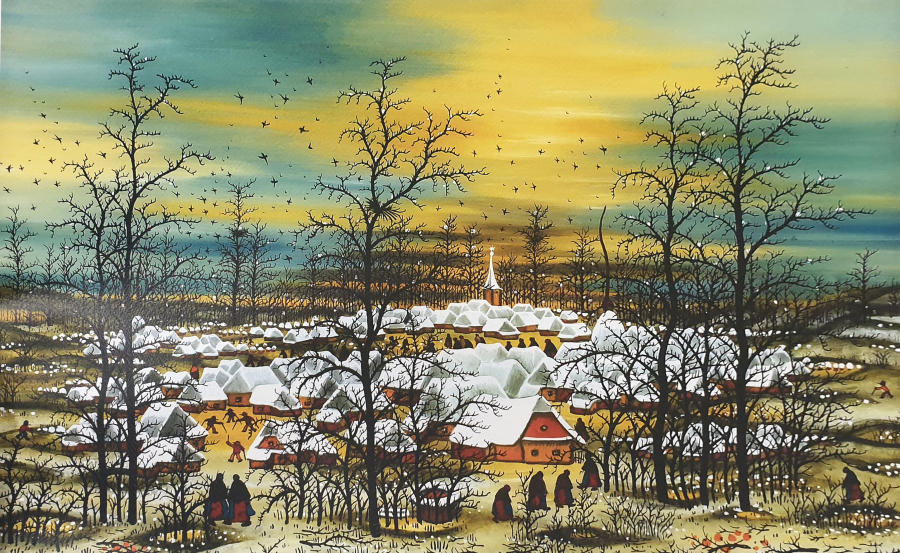
Winter Village (Ivan Lacković Croata)
Perhaps that is the charm of winter. Although the weather is harsh and the landscape is more desolate than other seasons, winter still appears in paintings with a myriad of extremely diverse shades, bright and cheerful or dark and sad, carrying the soul of the landscape and conveying the thoughts and feelings of the painter.





